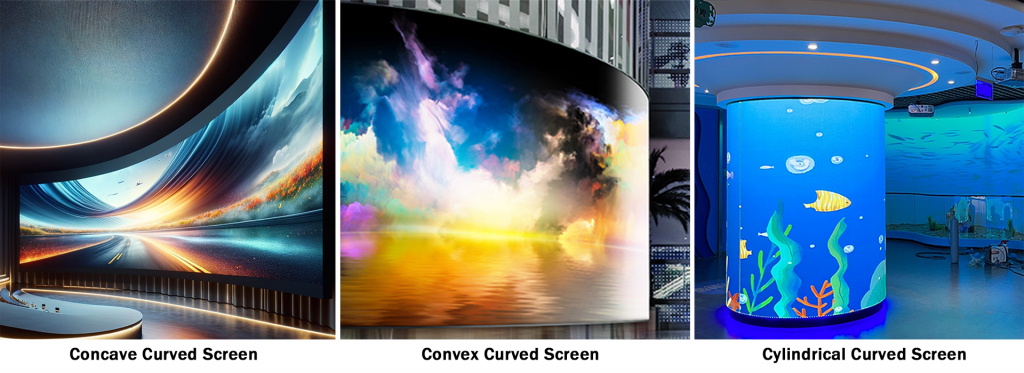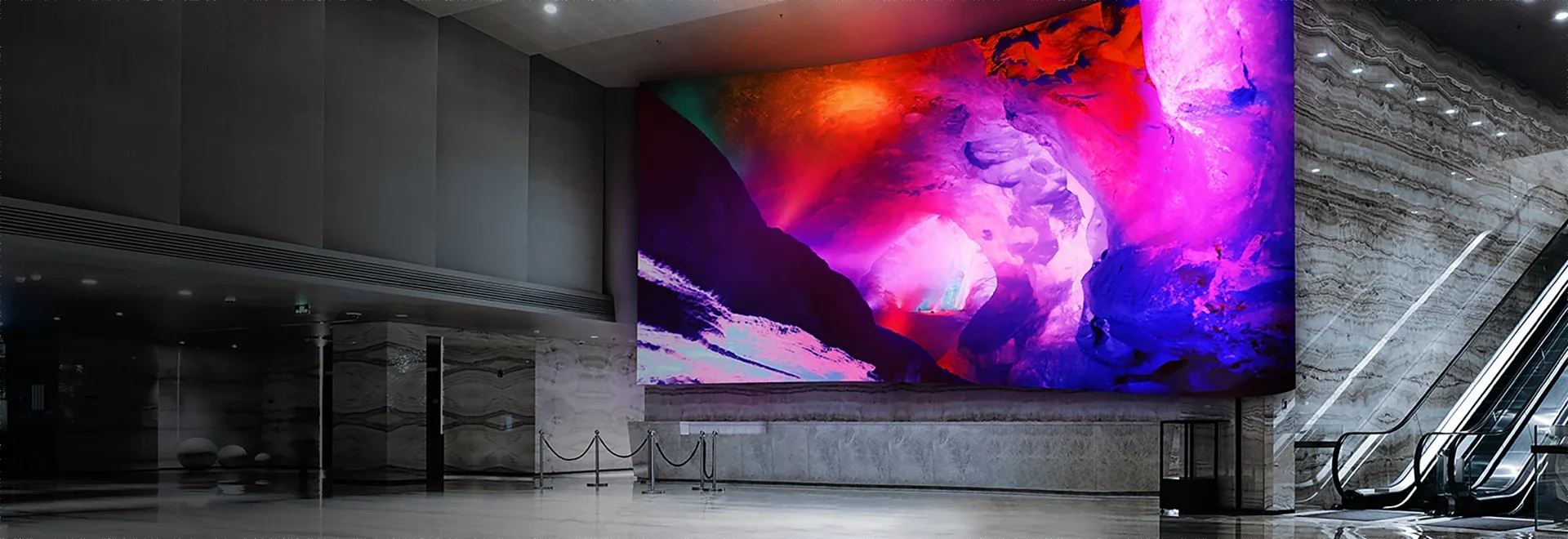How Can Curved LED Screens Revolutionize Your Experience?
In the dynamic world of LED displays, the choice between curved and flat screens introduces a new dimension to visual experiences. This article delves into the distinctions between curved and flat LED screens, explores the different types and advantages of curved LED displays, and examines their diverse applications across various scenarios.
Differences between Curved and Flat LED Screens:
1. Shape:
Flat LED Screens: Traditional flat screens have a standard rectangular shape, offering a straightforward display surface.
Curved LED Screens: These screens feature a gentle curve in their design, providing a more immersive and panoramic viewing experience.
2. Visual Impact:
Flat LED Screens: Suitable for conventional setups, delivering content in a straightforward manner.
Curved LED Screens: Enhance the visual impact by wrapping the content around the viewer, creating a more engaging and encompassing display.
3. Perspective Enhancement:
Flat LED Screens: Present content uniformly to viewers across the entire screen.
Curved LED Screens: Tailor the viewing experience to match the natural curvature of the human eye, minimizing distortions and enhancing overall clarity.
Types and Advantages of Curved LED Screens:
1. Types of Curved LED Screens:
Concave Curved Screens: Inward-curving screens suitable for creating immersive environments.
Convex Curved Screens: Outward-curving screens offering unique visual perspectives.
Cylindrical Curved Screens: Forming a cylindrical shape, these screens provide a wraparound visual experience.

2. Advantages of Curved LED Screens:
Immersive Experience: Curved screens envelop viewers, creating a more immersive and captivating visual experience.
Reduced Glare and Reflection: Curved screens can minimize glare and reflections, optimizing visibility and reducing eye strain.
Enhanced Depth and Realism: The curvature adds depth to visuals, enhancing the sense of realism and engagement.
Optimized Viewing Angles: Curved screens offer more consistent viewing angles for audience members, regardless of their position.
Applications of Curved LED Screens:
1. Entertainment and Gaming:
Curved screens elevate gaming and cinematic experiences, providing a more immersive and encompassing field of view.
2. Virtual Reality (VR) and Simulation:
In VR applications and simulations, curved screens enhance the sense of presence and realism.
3. Digital Signage and Advertising:
Curved LED displays attract attention and deliver content in a visually striking way, making them ideal for advertising and digital signage.
4. Control Rooms and Command Centers:
Curved screens in control rooms enhance data visualization, allowing operators to monitor information more efficiently.
5. Exhibitions and Events:
Curved LED screens create visually stunning displays at exhibitions, trade shows, and live events, leaving a lasting impression on attendees.
In conclusion, the choice between curved and flat LED screens brings forth a range of possibilities for visual storytelling. Curved LED screens, with their various types and advantages, redefine how content is presented and experienced across entertainment, business, and immersive environments.With continuous technological advancements, we can expect curved LED displays to revolutionize visual experiences, offering innovative applications that redefine how we perceive and engage with content.

